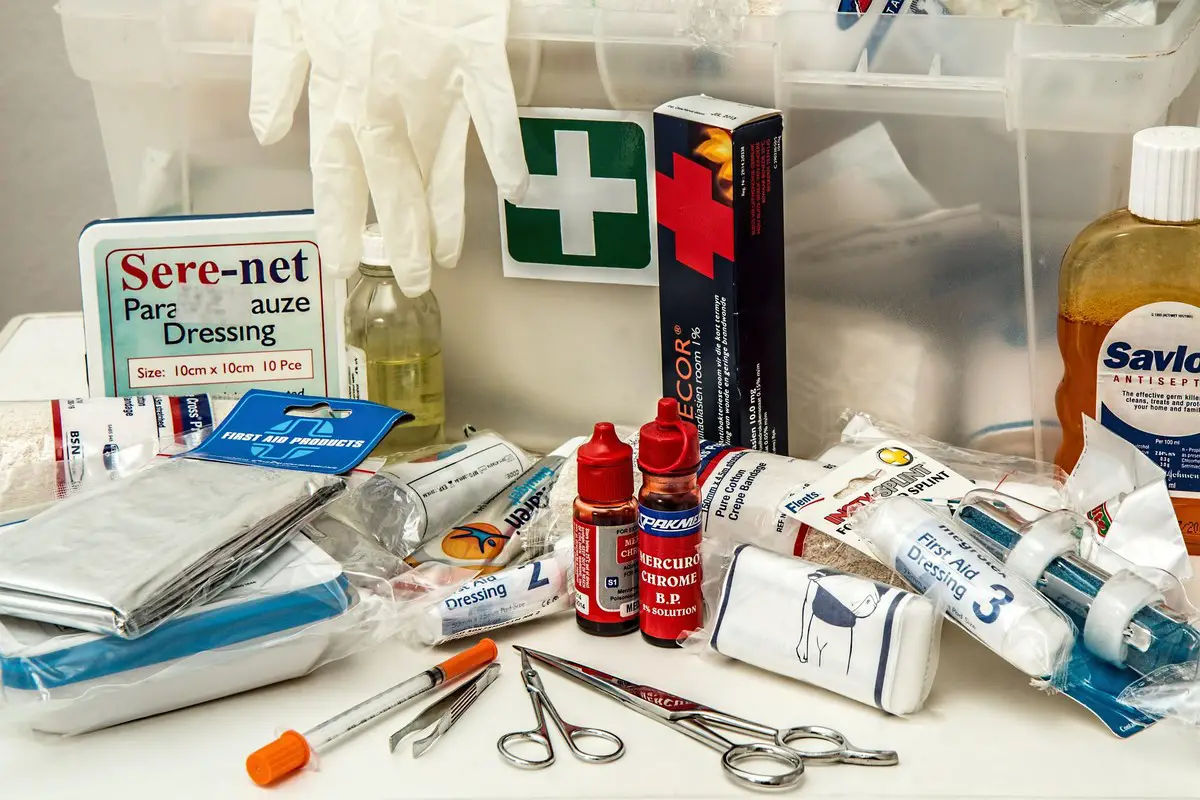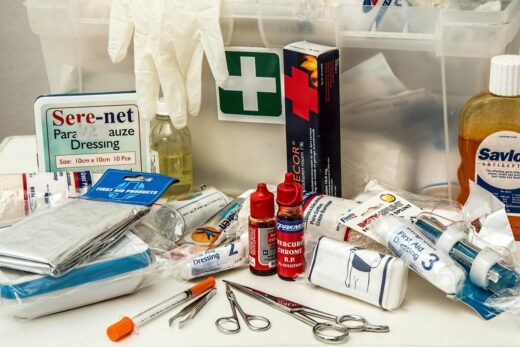Common but avoidable workplace accidents guide, Building site safety tips, H&S advice
Common but Avoidable Workplace Accidents
25 April 2022
On-the-job accidents are one of the most costly risks your company faces every day it’s in operation. While you want to ensure that your employees work in a safe environment, the unexpected can happen. The injuries a worker sustains can change their life forever. Your workers’ compensation coverage can address the financial consequences and provide much-needed medical benefits. But, it can’t protect your brand’s reputation.
The best strategy to minimize workplace accidents is to understand how they occur and prevent them.
Top Preventable Workplace Accidents
While it is nearly impossible to prevent workplace accidents entirely, there are some steps you can take to reduce the likelihood proactively. Having appropriate insurance coverage to protect your workers, clients, visitors, and business from injury liability is one step toward mitigating risk.
While it doesn’t prevent the accident, it protects the individual and the business from non-physical repercussions. Be sure to assess your risks with a professional to determine which types of coverage are a must for your business. Standard coverage includes general liability (a and workers’ compensation insurance. After looking at workers’ comp insurance costs, it may seem easy to cut spending by not having coverage. But when an injury occurs, you will need to cover medical treatments, lost wages, and any other benefits you offer out of pocket – all of which proper workers’ comp insurance covers.
Consulting with a personal injury lawyer can also be a wise move. They can help protect your business from potential lawsuits and uphold the injured employee’s rights. Having them on your side can provide peace of mind and expert guidance during what can be a stressful and challenging time.
Below are the most common types of accidents in the workplace every year and how to prevent them.
Slip, Trips, and Falls
Falls that involve slipping or tripping account for a quarter of reported workplace injuries every year – because of the many factors that can lead to these situations, including weather conditions, work floor obstructions, and poor footwear. Fortunately, these accidents are mostly preventable.
Top ways to help your team members minimize occurrences of these painful incidents are relatively straightforward:
- Signage;
- Floor resurfacing;
- Treatment of walking areas to prevent the buildup of dirt, ice, water, and other hazards;
- Require the use of shoes designed to grip despite oil, grease, and other surface dangers;
- Using safety gear like harnesses and tie-offs;
- Maintain the cleanliness and organization of the work areas.
Repetitive Motion Injuries
Also referred to as an RMI for short, a repetitive motion injury results from poor ergonomics and repeating the same motion throughout an activity. A great example would be employees unloading pallets in a warehouse. This work will require constant reaching, pulling, and squatting throughout their entire shift, which can cause additional stress on their muscles, joints, nerves, and spine.
The most common forms of an RMI injury include:
- Tennis elbow
- Rotator cuff tendonitis
- Carpal tunnel syndrome
- Back strain
It may surprise you that office workers experience frequent incidents of RMIs, but this is because of their activities keeping them stationary in a chair while working on a computer.
These are common farm accidents where workers may face repetitive strain injuries from long hours of manual labor or improper posture while handling heavy machinery. Such injuries can often lead to long-term health issues if not properly addressed, making safety and ergonomic practices essential in reducing these risks.
Fortunately, these injuries are avoidable by introducing ergonomic equipment and more frequent breaks throughout the day.
Moving and Stationary Objects
When an employee gets struck by a moving object or accidentally runs into one that is stationary, the injuries sustained can be tragic. Someone regularly faced road crews with the risk of a passing vehicle striking them while repairing our highways, bridges, and sidewalks.
The sheer power of a vehicle can cause a long list of injuries, including:
- Broken bones;
- Traumatic brain injury;
- Emotional trauma;
- Nerve damage;
- Disfigurement;
- Temporary or permanent disability;
- Loss of work capacity;
Like slips and falls, incidents involving forklifts or falling objects are mostly preventable. Insist your team wears highly-visible safety clothing, avoid going on foot into areas with moving vehicles, designate safe walk areas, and provide regular training to boost awareness about their job surroundings.
To best prevent injuries where workers might strike a stationary object with their heads or limbs, warning signs and safety paint or tape outlining these zones is crucial. It’s easy for an employee to forget when distracted by their duties, so visual reminders can go a long way in preventing accidents. Also, make sure appropriate PPE is available, such as hard hats, to protect them from low-hanging pipes.
Overexertion
Overexertion is another common but preventable workplace injury. Typically, when an employee exerts significant physical effort, such as manually unloading a tractor-trailer, their chance of sustaining a musculoskeletal injury increases. Therefore, if your company is part of a manufacturing, transportation, public service, or healthcare industry, it’s important to assess risk levels regularly for positions with high physical demands.
Many times, accident prevention is all about having the right tools, for example, using hoists to move heavy objects instead of manual labor or providing pre-shift stretching sessions and proper body posture training.
Car Accidents
Motor vehicle collisions that occur while traveling for business are a common issue for companies everywhere. These accidents happen for many reasons, including poor maintenance, bad driving habits, and unsafe driving conditions.
Before you allow any employees behind the wheel of a company car or allow them to use their own vehicle for their job, you need more than commercial auto insurance to protect you. Always check a worker’s driving history, provide them with additional driver safety training, and verify it’s safe to operate.
Entanglement
If your facilities rely on mechanized equipment, there is a risk your employees could experience one of the below accidents involving entanglement:
- Pinching part of the body;
- Cutting of digits/limbs;
- Wrapping of digits and/or limbs in machinery;
- Pulling in of limbs, hair, or clothing.
Moving parts on a conveyor belt, punch/press machinery, and even a paper shredder can leave employees with lifelong injuries. Use of lock-out/tag-out procedures, installation of guards, and work clothing requirements can go a long way in preventing these injuries.
Falling from Heights
While the law requires employers to provide fall protection to employees working at heights greater than six feet, falls are still the top cause of death in the workplace. These tragic incidents often occur after a worker fails to wear personal protective equipment (PPE) and use necessary harnesses and/or tie off a separate line.
Electrocution
Your workers don’t need to be working on power lines to suffer an electrocution injury. Office equipment with damaged power cords, faulty power outlets, and improperly used power strips can send a powerful electrical shock.
Always ensure that powered machines and office equipment are in good repair. Also, provide training for employees that work around live power lines to help them complete their work as safely as possible.
Be Proactive about Workplace Safety
Despite your best efforts, workplace accidents can happen and seriously injure an employee. To protect your business against liability for these moments, implementing job safety analysis can further reduce this risk and minimize injuries. You should also have general liability insurance coverage and a workers’ compensation policy to safeguard both your company and workers financially.
Comments on this guide to Common but avoidable workplace accidents article are welcome.
Construction Articles
Construction Posts
Common Types of Accidents on Construction Sites in UK
Building a Pedestrian Bridge Construction
5 reasons to use steel in residential construction
Building Articles
Residential Architecture
Comments / photos for the Common but avoidable workplace accidents page welcome






